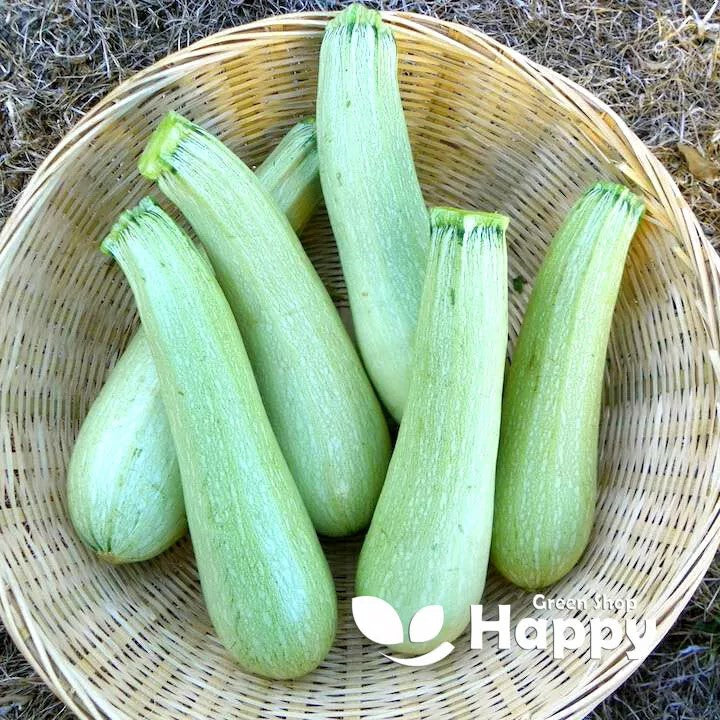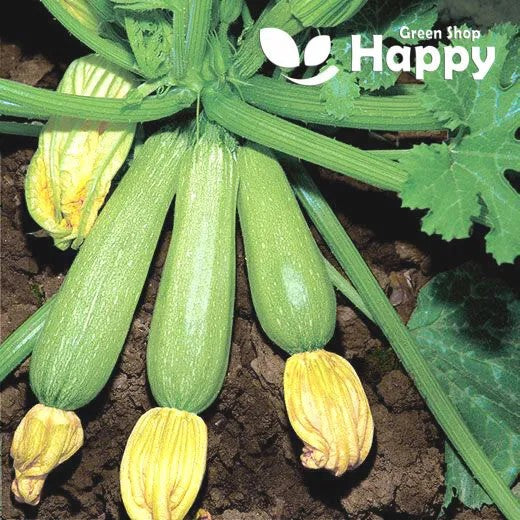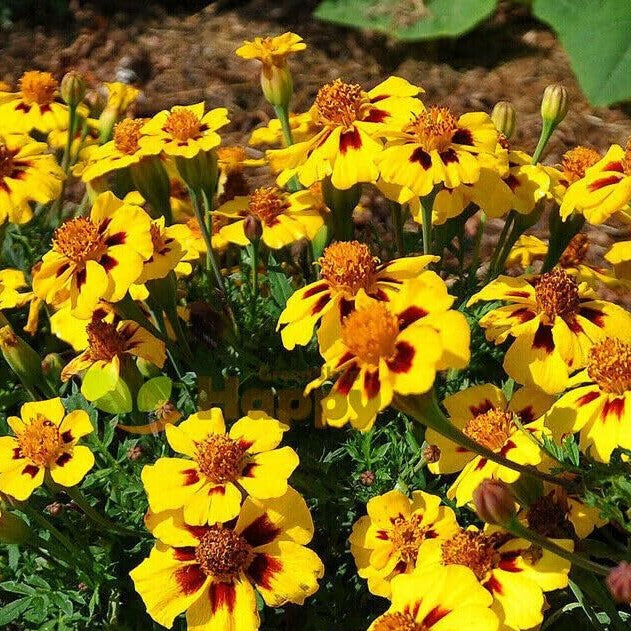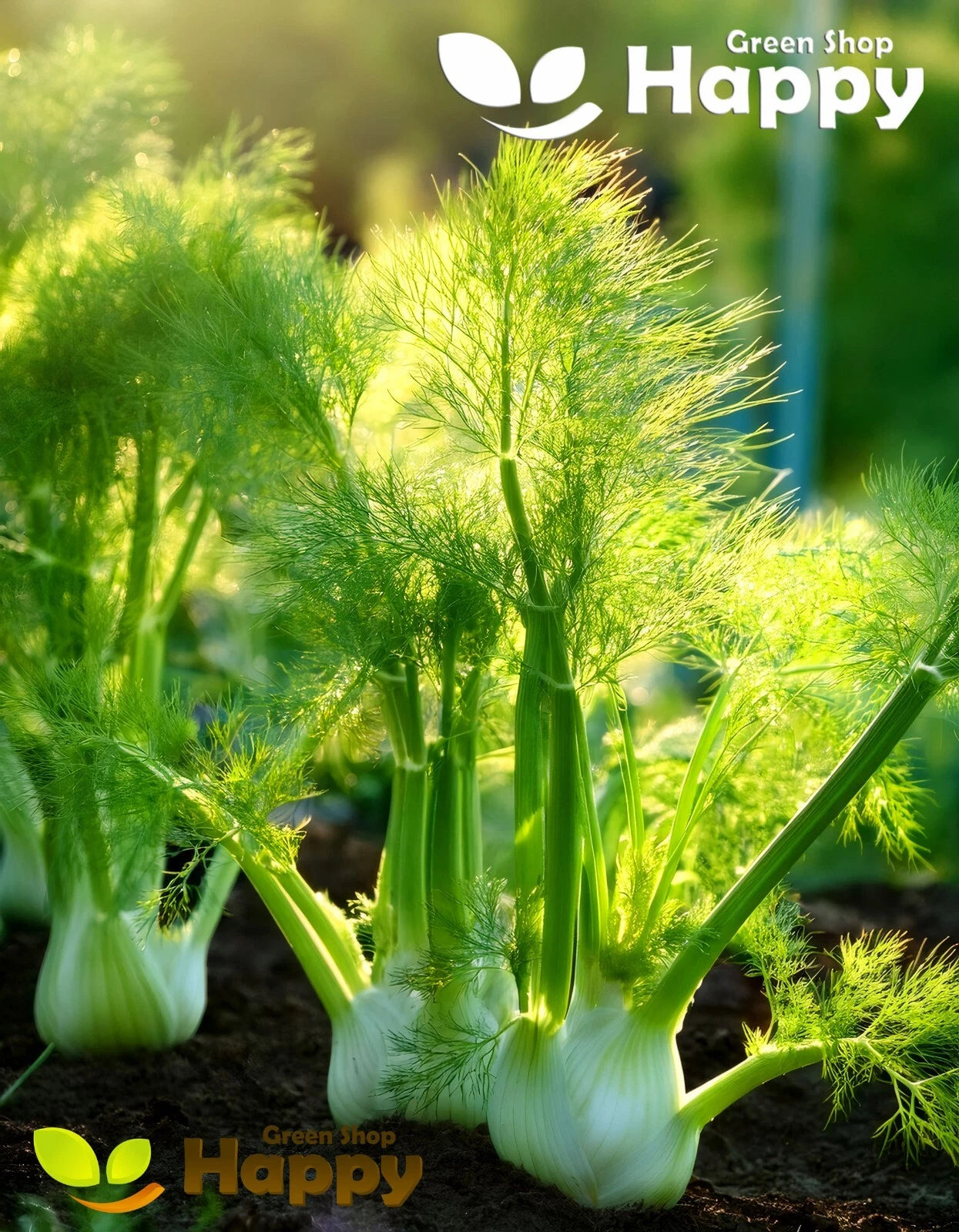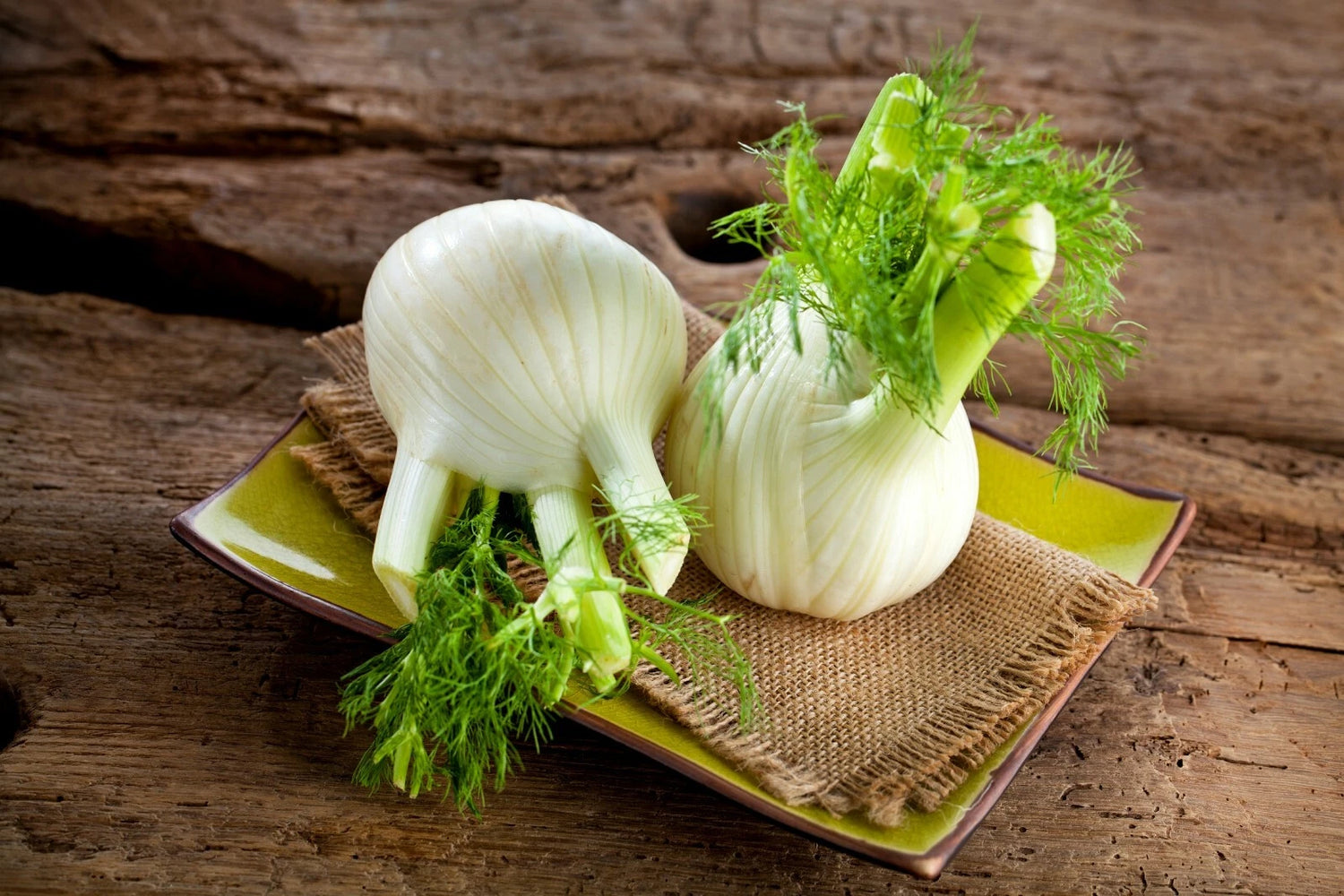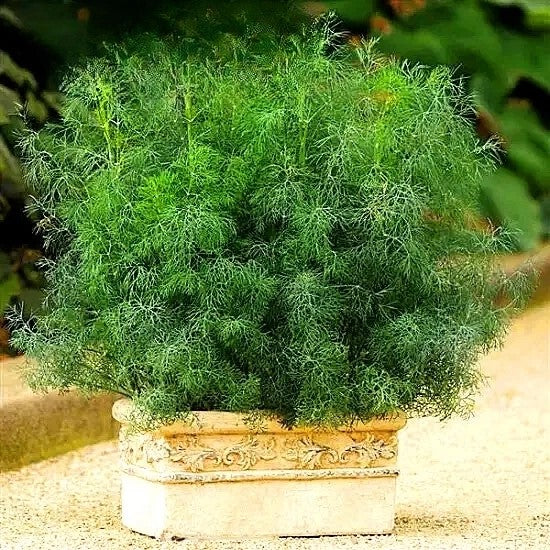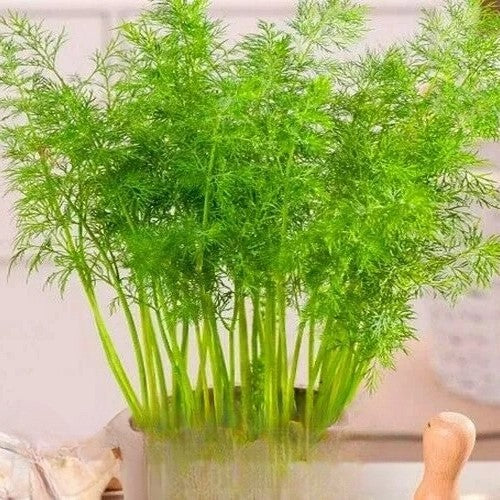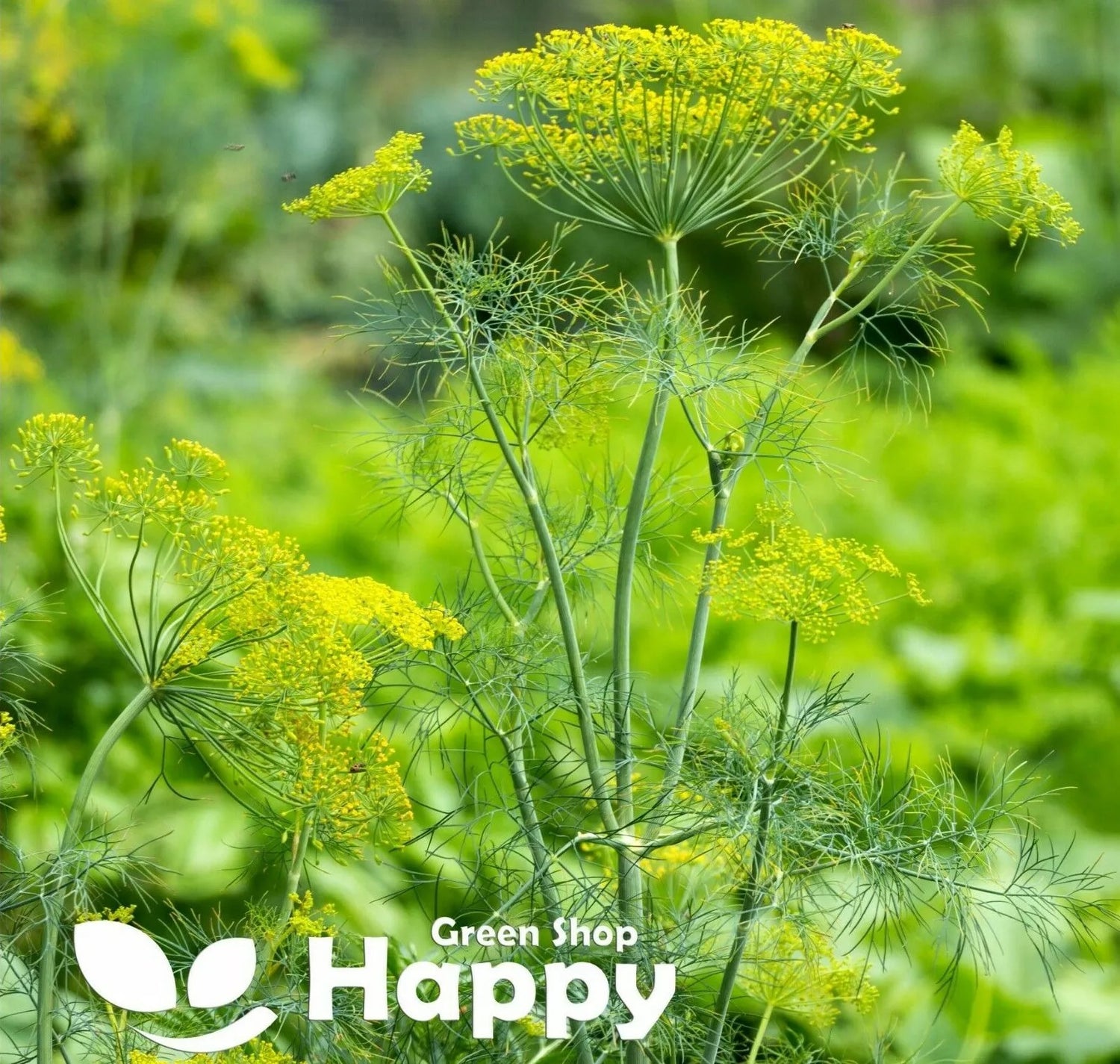Sort by:
47 products
47 products
Italian Courgette 'Genovese' – Seeds (Zucchini Long Pale Green)
Italian Courgette 'Genovese' is a classic zucchini variety producing long, pale green fruits with tender flesh and a mild, delicate flavor. Ideal for grilling, steaming, roasting, or sautés, this high-yielding summer squash thrives in sunny gardens and produces a continuous harvest throughout the season. Perfect for fresh cooking and adding color and taste to your meals.
How to Grow
-
Sow seeds indoors from March to April or directly outdoors from April to June.
-
Plant 2–3 seeds per hole, 2–3 cm deep, thinning to the strongest seedling.
-
Space plants 60–90 cm apart in fertile, well-drained soil with full sun.
-
Water regularly and mulch to retain moisture.
-
Harvest fruits when young and tender for the best flavor.
Key Features
-
Long, pale green summer zucchini
-
Tender flesh with mild, delicate flavor
-
High-yielding and continuous harvest
-
Versatile for grilling, roasting, steaming, and sautés
-
Easy to grow in gardens, raised beds, and containers
Ideal For
-
Summer vegetable gardens and home allotments
-
Fresh cooking: sautéing, grilling, roasting, and steaming
-
Gardeners seeking prolific and reliable zucchini varieties
Sowing & Harvest
-
Sow: March to June
-
Spacing: 60–90 cm
-
Harvest: June to September
Quick Tip
-
Pick zucchinis when 15–20 cm long for the best flavor and texture; regular harvesting encourages continued production.
Herb Corn Salad Seeds (Valerianella locusta)
Also known as Lamb’s Lettuce or Mâche, Corn Salad is a fast-growing leafy green with soft, nutty-flavored leaves. Popular in European cuisine, it’s perfect for salads, sandwiches, and as a tender garnish. Hardy and cold-tolerant, it thrives in cooler months, making it an excellent choice for autumn and winter harvests. Easy to grow and highly nutritious, it’s a must-have for year-round salads.
How to Grow
-
Sow directly outdoors from March to May, and again from August to October.
-
Prefers fertile, well-drained soil in full sun or partial shade.
-
Sow thinly, 1 cm deep, in rows 20 cm apart.
-
Thin seedlings to 10 cm spacing for healthy plants.
-
Harvest young leaves as needed for cut-and-come-again cropping.
Key Features
-
Tender, nutty-flavored leaves
-
Hardy and cold-tolerant, ideal for winter salads
-
Quick and easy to grow
-
Perfect for cut-and-come-again harvesting
-
Highly nutritious and versatile in the kitchen
Ideal For
-
Autumn and winter vegetable gardens
-
Fresh salads and sandwich fillings
-
Containers, raised beds, and small gardens
-
Gardeners seeking a reliable cool-season green
Sowing
-
Best time: March–May, August–October
-
Depth: 1 cm
-
Spacing: 10 cm between plants, 20 cm between rows
-
Position: Full sun or partial shade
-
Harvest: October to March
Quick Tip
-
Succession sow every few weeks for a continuous supply of fresh leaves throughout the cooler seasons.
French Marigold ‘Petite Orange’ – Seeds
(Tagetes patula nana) – Compact Orange Marigold
French Marigold ‘Petite Orange’ is a dwarf, early-flowering marigold variety producing masses of bright orange blooms on compact, bushy plants. It’s perfect for borders, edging, rockeries, and containers, offering continuous color throughout summer until the first frost.
Key Features
-
Type: Annual
-
Height: 20–25 cm
-
Flowering: June–October
-
Color: Bright orange
-
Special: Compact habit, long flowering, easy to grow
Ideal For
-
Bedding and border planting
-
Pots, containers, and window boxes
-
Edging and rock gardens
-
Companion planting with vegetables (repels pests)
Sowing & Growing
-
Sow indoors: March–April
-
Transplant outdoors: After frost
-
Spacing: 20–25 cm
-
Soil: Well-drained, moderately fertile soil
-
Sunlight: Full sun
Care Tips
-
Remove spent flowers to encourage continuous blooms.
-
Water regularly but avoid waterlogging.
-
Tolerates heat and dry conditions well.
French Marigold 'Dainty Marietta' – 500 Seeds (Tagetes patula nana)
Cheerful and easy to grow, French Marigold 'Dainty Marietta' produces golden-yellow single blooms with a bold maroon blotch at the center. Compact and free-flowering, this dwarf variety is perfect for edging, borders, and pots, while also being valued for pest-deterring companion planting.
Why Grow 'Dainty Marietta'
-
Bright yellow flowers with maroon centers
-
Long flowering season from summer to frost
-
Dwarf, bushy, and easy to grow
-
Attracts pollinators and deters pests
Key Features
-
Type: Half-hardy annual (Tagetes patula nana)
-
Height: 20–25 cm (dwarf)
-
Flowering: June–October
-
Position: Full sun
-
Uses: Borders, edging, containers, companion planting
Ideal For
-
Bright summer bedding
-
Patio pots and window boxes
-
Edging pathways and borders
-
Vegetable gardens as a natural pest deterrent
Sowing & Growing
-
Sow indoors: March–April in trays or pots
-
Sow outdoors: May–June after frost
-
Germination: 7–14 days at 18–22°C
-
Transplant or thin seedlings to 20 cm apart
-
Prefers well-drained soil in full sun
French Marigold ‘Legion of Honour’ – Seeds (Tagetes patula nana)
The French Marigold ‘Legion of Honour’ is a charming dwarf variety with golden-yellow blooms marked by rich mahogany-red centers. Compact and free-flowering, it provides vibrant color all summer long. Easy to grow, pest-repelling, and perfect for borders, containers, and companion planting.
Why Grow ‘Legion of Honour’?
-
Striking bicolor flowers of yellow and red
-
Long-lasting summer blooms
-
Dwarf, compact growth habit
-
Attracts pollinators and deters pests
Key Features
-
Type: Half-hardy annual
-
Height: 20–25 cm
-
Flowering: June–October
-
Position: Full sun
-
Uses: Borders, pots, edging, companion planting
Ideal For
-
Bedding and low borders
-
Patio containers
-
Natural pest control in vegetable gardens
Sowing & Growing
-
Sow indoors: March–April, 6–8 weeks before last frost
-
Sow outdoors: May, after frost risk has passed
-
Germination: 7–14 days at 18–22°C
-
Space plants 20–25 cm apart
-
Remove spent flowers to prolong blooming
French Marigold Double 'Brocade Red' – 350 Seeds (Tagetes patula nana)
Bring bold, fiery color to your summer displays with French Marigold Double 'Brocade Red'. This compact dwarf variety produces masses of fully double, richly ruffled blooms in glowing scarlet-red shades. The continuous flowering habit makes it a favorite for bedding, edging, pots, and window boxes. Easy to grow and low maintenance, it also helps deter pests in the garden.
Why Grow 'Brocade Red'
-
Double blooms in striking scarlet-red tones
-
Compact, bushy growth – perfect for edging and containers
-
Long-lasting summer color
-
Naturally pest-repelling companion plant
Key Features
-
Type: Half-hardy annual (Tagetes patula nana)
-
Height: 20–25 cm
-
Flowering: June–October
-
Position: Full sun
-
Uses: Beds, borders, edging, patio pots, containers
Ideal For
-
Creating vibrant bedding displays
-
Patio pots and balcony containers
-
Edging garden paths and borders
-
Companion planting with vegetables
Sowing & Growing
-
Sow indoors: March–April in trays or pots, lightly covering seed
-
Sow outdoors: May, directly where they are to flower
-
Germination: 7–14 days at 18–22°C
-
Plant spacing: 20 cm apart
-
Thrives in sunny, well-drained soil
Fennel Bulb 'Florence' – Seeds (Foeniculum vulgare)
Fennel Bulb 'Florence' is a versatile and flavorful vegetable producing crisp, swollen white bulbs with tender, aromatic fronds. Known for its sweet, anise-like flavor, it’s perfect for roasting, grilling, salads, and soups. Easy to grow, this variety thrives in sunny, well-drained gardens and makes a striking addition to both kitchen and ornamental beds.
How to Grow
-
Sow seeds indoors from February to April or directly outdoors from March to June.
-
Plant 0.5–1 cm deep in fertile, well-drained soil.
-
Thin seedlings to 30–40 cm apart to allow bulb development.
-
Prefers full sun and consistent moisture.
-
Harvest bulbs when swollen and firm, before they become woody.
Key Features
-
Produces crisp, swollen white bulbs with aromatic fronds
-
Sweet, anise-like flavor ideal for cooking
-
Thrives in sunny, well-drained soil
-
Suitable for salads, roasting, grilling, and soups
-
Attractive addition to vegetable and kitchen gardens
Ideal For
-
Culinary use in fresh salads, soups, and roasting
-
Home gardens and raised beds
-
Gardeners seeking versatile, flavorful vegetables
Sowing & Harvest
-
Sow: February to June
-
Depth: 0.5–1 cm
-
Spacing: 30–40 cm
-
Harvest: June to September
Quick Tip
-
For best flavor, harvest bulbs before they get too large and the texture becomes tough.
Dwarf Dill 'Forrest' – Seeds
(Anethum graveolens) – Compact, Aromatic Herb
Dwarf Dill 'Forrest' is a compact, slow-bolting variety ideal for small gardens, pots, and window boxes. Its fragrant, feathery leaves are perfect for seasoning salads, soups, pickles, and fish dishes. This variety produces consistent, tender foliage and is easy to grow even in limited space.
Key Features
-
Type: Annual herb
-
Height: Dwarf, 25–35 cm
-
Flavor: Classic aromatic dill, mild and fresh
-
Harvest: Leaf harvest from 40–50 days after sowing
-
Use: Culinary seasoning, pickling, fresh salads
Ideal For
-
Small gardens, balconies, and containers
-
Culinary use in salads, soups, and sauces
-
Companion planting in vegetable beds
-
Homegrown, fresh herb supply
Sowing & Growing
-
Sow outdoors: March–June, thin seedlings to 10–15 cm apart.
-
Sow indoors: February–April, transplant seedlings carefully.
-
Soil: Light, well-drained, moderately fertile.
-
Sunlight: Full sun preferred.
-
Harvest: Cut leaves as needed; avoid cutting entire plants for continuous growth.
Care Tips
-
Keep soil evenly moist for tender leaves.
-
Regular harvesting encourages bushier growth.
-
Protect young plants from strong wind or heavy rain.
Dill Seeds (Anethum graveolens)
Bring fresh flavor and fragrance to your garden with Dill, a versatile culinary and medicinal herb. Known for its delicate feathery foliage and aromatic seeds, dill is a must-have for seasoning fish, soups, pickles, and salads. Easy to grow and quick to mature, it also attracts beneficial pollinators, making it a perfect addition to herb beds and kitchen gardens.
How to Grow
-
Sow directly outdoors from spring to early summer.
-
Prefers light, well-drained soil in full sun.
-
Sow thinly, 0.5–1 cm deep in rows 30 cm apart.
-
Thin seedlings to 15 cm spacing.
-
Avoid transplanting as dill dislikes root disturbance.
Key Features
-
Aromatic herb with feathery foliage and seeds
-
Delicious for seasoning fish, soups, salads, and pickles
-
Quick-growing and easy for beginners
-
Attracts bees and beneficial insects
-
Dual use: fresh leaves and dried seeds
Ideal For
-
Home cooking and herbal tea
-
Pickling and preserving vegetables
-
Companion planting in the garden
-
Attracting pollinators and beneficial insects
Sowing
-
Best time: March to June
-
Depth: 0.5–1 cm
-
Row spacing: 30 cm
-
Plant spacing: 15 cm after thinning
-
Harvest: Leaves in 6–8 weeks, seeds later in the season
Quick Tip
-
For a continuous supply, sow dill little and often every 2–3 weeks through the summer.
Showing 36/47


